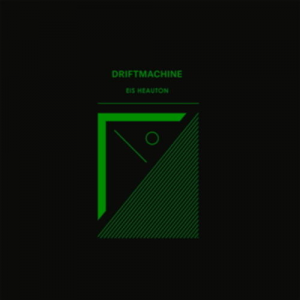Hallow Ground (vinyl)/Umor Rex (cassette)
 Eis Heauton is an eminently suitable title to describe what Driftmachine are up to on their second album under that name. The duo of Florian Zimmer (Saroos) and Andreas Gerth (of Tied & Tickled Trio) certainly allow and encourage their devices to live up to both the group moniker as well as the Greek term that refers to being in conversation with oneself. εἰς ἑαυτόν has also been rendered as Meditations, the title of the collected philosophical works of the Roman emperor Marcus Aurelius, a Stoic reflection on the individual’s place and ways of being within the natural cosmic order.
Eis Heauton is an eminently suitable title to describe what Driftmachine are up to on their second album under that name. The duo of Florian Zimmer (Saroos) and Andreas Gerth (of Tied & Tickled Trio) certainly allow and encourage their devices to live up to both the group moniker as well as the Greek term that refers to being in conversation with oneself. εἰς ἑαυτόν has also been rendered as Meditations, the title of the collected philosophical works of the Roman emperor Marcus Aurelius, a Stoic reflection on the individual’s place and ways of being within the natural cosmic order.
Obviously, Zimmer and Gerth take on a role that is far more than simple progenitors of the operating parameters given to the synth to interpret and then the mere recording engineers of the results. Above all, they are selectors of what is discarded and what stays, the ultimate arrangers and directors; but it does slide their purpose further away from the notion of composition into something far more in keeping with a description of the Eis Heauton as being essentially experimental music. This is perhaps most evident on “Das Trunkene Schiff” and the title track, where meandering parameters judder from shuddering pillars of interrupting bass to clipping, bleepy posts, demonstrating some of the album’s more evidently stochastic moments along the way.
Thanks no doubt to the constraints of the sonic palette available in the (numerous) modules used to construct Driftmachine’s synth, there is a certain consistency of sound throughout the album — bass timbres in particular hold a fondness for jagged peaks and rumbling sustain that most immediately bring the sounds of steamship horns to mind (especially on “Das Trunkene Schiff” — “The Drunken Ship” — as is only to be expected). Everything is captured precisely and unfolds with an almost stately sense of purpose, though once again perhaps the knowledge that there is something algorithmic working under the direction of the flesh and blood musicians influences the music’s reception, and this is perhaps evident on the haunted “Sunlit Reverie”, which unfolds with a sense of purpose which is at once ominous and relaxing while also containing an abstracted sense of time and place.It’s the title track itself where all the elements coalesce into a crisply-rendered voyage into the dark matter of deep space music, all the ripples and intonations of half a century and more of the electronic avantgarde present and correct. As with much of the rest of the album, “Eis Heauton” could easily soundtrack a wonder of the cosmos cinematic presentation of the Seventies kind where the audience — and perhaps the lab-coated technicians at the banks of their enormous racks of electronic controls — were avid enthusiasts for all manner of mind-expansion, pharmaceutical or otherwise. Thanks to the dynamics of the selection (if not exactly composition as such) and arrangements, one of the album’s impressive traits is the ability to bend not only space but time, which — suitably enough — drifts further and farther away among the tangle of patch leads and those clever self-generating modules.
-Linus Tossio-



